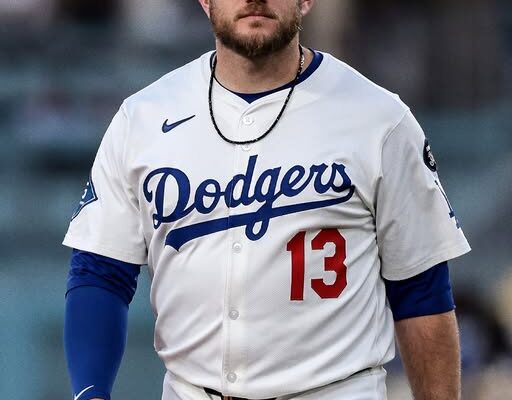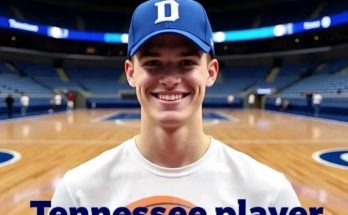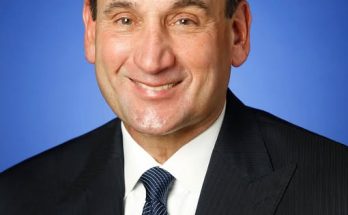Max Muncy, the Los Angeles Dodgers’ third baseman, recently experienced a scare when he suffered an injury to his left knee, raising concerns among fans, teammates, and the organization alike. The uncertainty surrounding his condition cast a shadow over the Dodgers’ season, given Muncy’s vital role both offensively and defensively for the team. Fortunately, after undergoing an MRI examination on Thursday, the results brought much-needed relief: there was no structural damage to his left knee. This news has been a source of comfort not only for Muncy himself but also for the Dodgers’ coaching staff and fans who understand the importance of his presence on the field. However, despite the positive MRI outcome, Muncy is still expected to miss approximately six weeks while recovering from the injury, a significant amount of time that will test the Dodgers’ depth and resilience during the ongoing baseball season.
Max Muncy has been a key player for the Dodgers since joining the team, known for his power hitting and his ability to deliver crucial hits in high-pressure situations. His contributions at third base have been equally important, providing reliable defense that helps shore up the infield. His presence in the lineup often means the difference between a run scored or an out recorded. Because of this, the injury news initially sent ripples of concern through the team and its fan base. Knee injuries, in particular, can be tricky and sometimes have long-term effects on a player’s mobility, agility, and overall performance. The Los Angeles Dodgers and their medical team immediately moved to conduct a thorough evaluation to determine the extent of the injury and the best course of action for Muncy’s recovery.
The MRI scan, which was performed to gain a detailed view of the knee’s internal structures, was the crucial diagnostic step in assessing the injury’s severity. Thankfully, the imaging revealed that there was no damage to the major ligaments, cartilage, or meniscus. This absence of structural damage means that Muncy’s knee did not suffer any tears or other serious impairments that might have required surgery or a more extended rehabilitation period. This is particularly good news because structural injuries to the knee can be career-altering or at least cause lengthy absences that disrupt a player’s rhythm and conditioning. However, despite the lack of structural damage, the injury is still serious enough to warrant a multi-week recovery period. This suggests that Muncy may have sustained soft tissue damage, such as a ligament sprain, tendon strain, or inflammation, which requires careful management and rehabilitation to heal properly.
The six-week timeframe for Muncy’s absence is significant for the Dodgers. During this period, the team will need to adjust their lineup and defensive assignments to compensate for the loss of one of their key players. This situation tests the team’s depth and flexibility, forcing coaches to explore alternative options and give opportunities to other players who can step up in Muncy’s stead. The Dodgers, known for their talented roster, have several players who can potentially fill in, but replacing a player of Muncy’s caliber is never easy. His ability to hit for power, drive in runs, and play solid defense at third base makes him a central figure in the Dodgers’ strategy. The absence of a player like him will inevitably change the dynamic of the team, requiring adjustments both offensively and defensively.
From Muncy’s perspective, the news from the MRI was a relief but also a reminder of the challenges ahead. Injuries are an unfortunate reality in professional sports, and managing them effectively is crucial to a player’s long-term success and health. For Muncy, the focus will now shift to rehabilitation, physical therapy, and working closely with the Dodgers’ medical and training staff to regain strength, mobility, and confidence in his knee. The recovery process will likely involve a gradual progression from rest and healing to targeted exercises that rebuild muscle and improve joint stability. Throughout this period, Muncy will need to balance pushing himself to regain form while avoiding setbacks that could prolong his absence or risk re-injury.
The Dodgers organization, on their part, has expressed support and optimism about Muncy’s recovery. The team’s medical staff and trainers are well-equipped to provide the necessary care and guidance to help him return to full strength. In addition, the Dodgers’ management has demonstrated an understanding of the importance of not rushing injured players back onto the field, preferring to prioritize long-term health over short-term gains. This approach aligns with the broader trend in professional sports towards careful injury management and player wellness, recognizing that rushing an athlete back too soon can lead to chronic issues or diminished performance down the line.
While Muncy is sidelined, the Dodgers will undoubtedly keep a close eye on his rehabilitation progress, providing updates to fans and the media as appropriate. The team’s communication will likely emphasize the positive aspects of the MRI results and the confidence in a successful recovery, helping to maintain morale among supporters. Meanwhile, the Dodgers will continue to compete with the roster adjustments necessitated by Muncy’s absence, relying on other players to fill the gap and keep the team performing at a high level. This period will be an opportunity for other players to demonstrate their capabilities and for the Dodgers to show the depth that has contributed to their success in recent years.
For Max Muncy personally, this injury and recovery period will test his resilience and determination. Injuries can be frustrating and challenging mentally and physically, but they also offer athletes a chance to refocus, rehabilitate, and come back stronger. Muncy’s work ethic, competitive spirit, and support system will be key factors in his return to the field. When he does come back, fans and teammates alike will be eager to see him resume his role and continue contributing to the Dodgers’ quest for victory.
In summary, the recent MRI results revealing no structural damage in Max Muncy’s left knee have brought a sense of relief amid a challenging situation. While he is expected to miss about six weeks, this timeline provides a clear path forward for recovery and rehabilitation. The Dodgers will have to navigate the season without one of their key players for a significant stretch, but the optimism surrounding Muncy’s health and return bodes well for the future. His absence will create challenges, but also opportunities for other players to step up. Ultimately, the combination of expert medical care, a solid team structure, and Muncy’s determination should pave the way for a successful comeback and continued contributions to the Dodgers’ success on the field.



